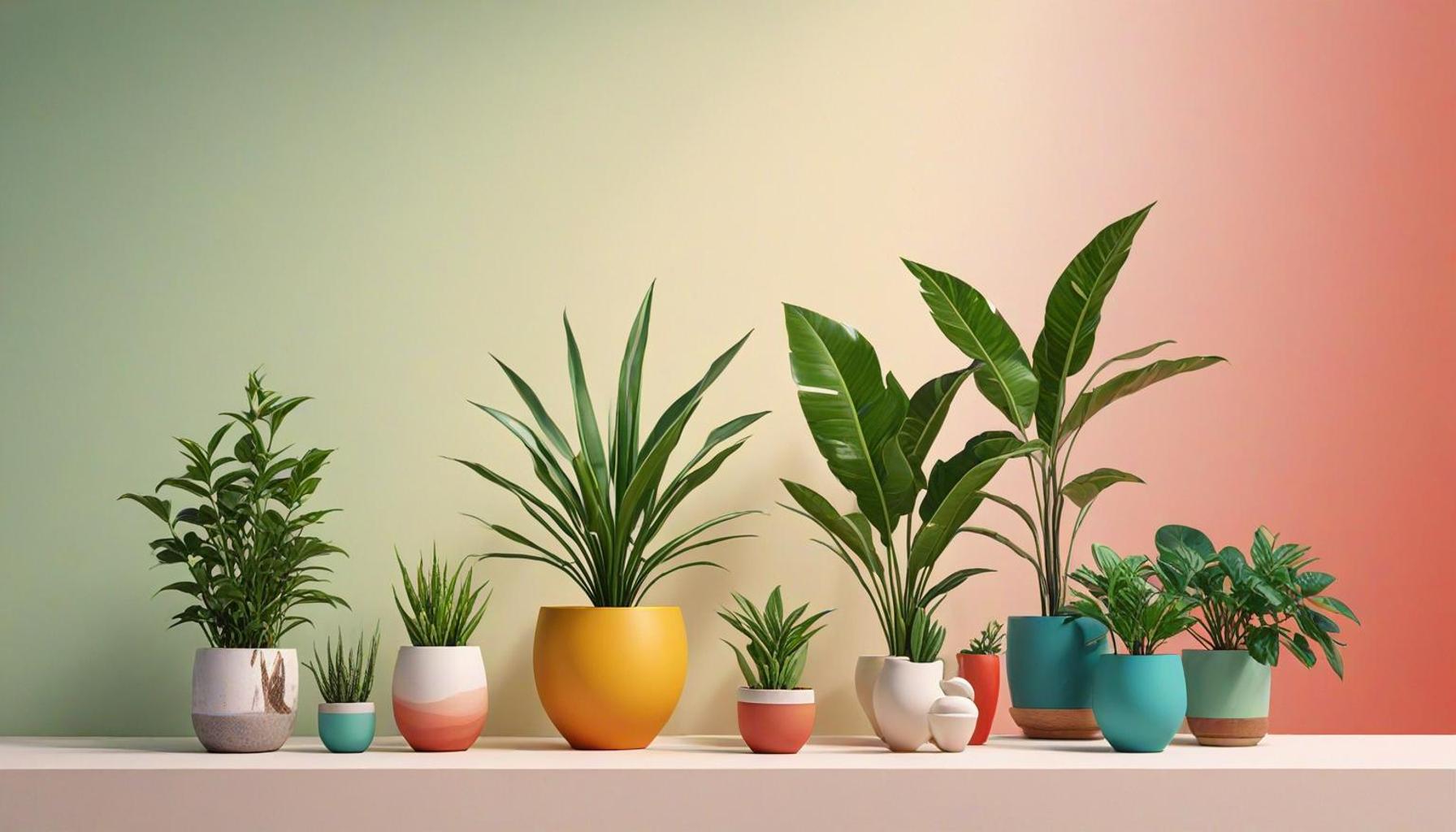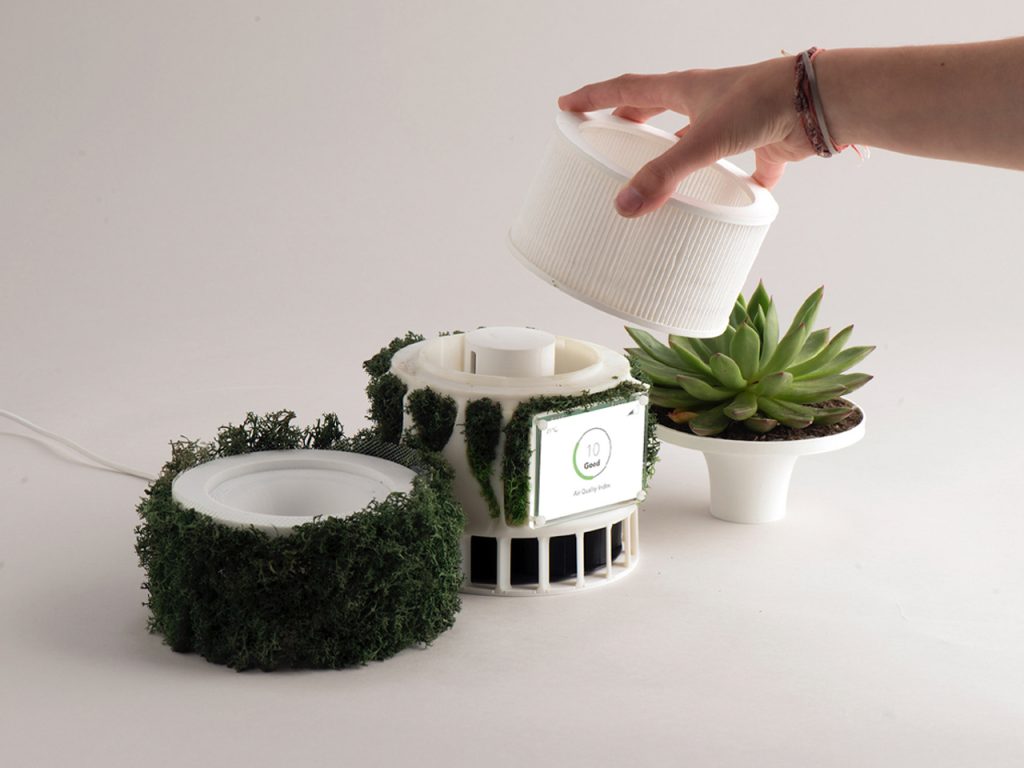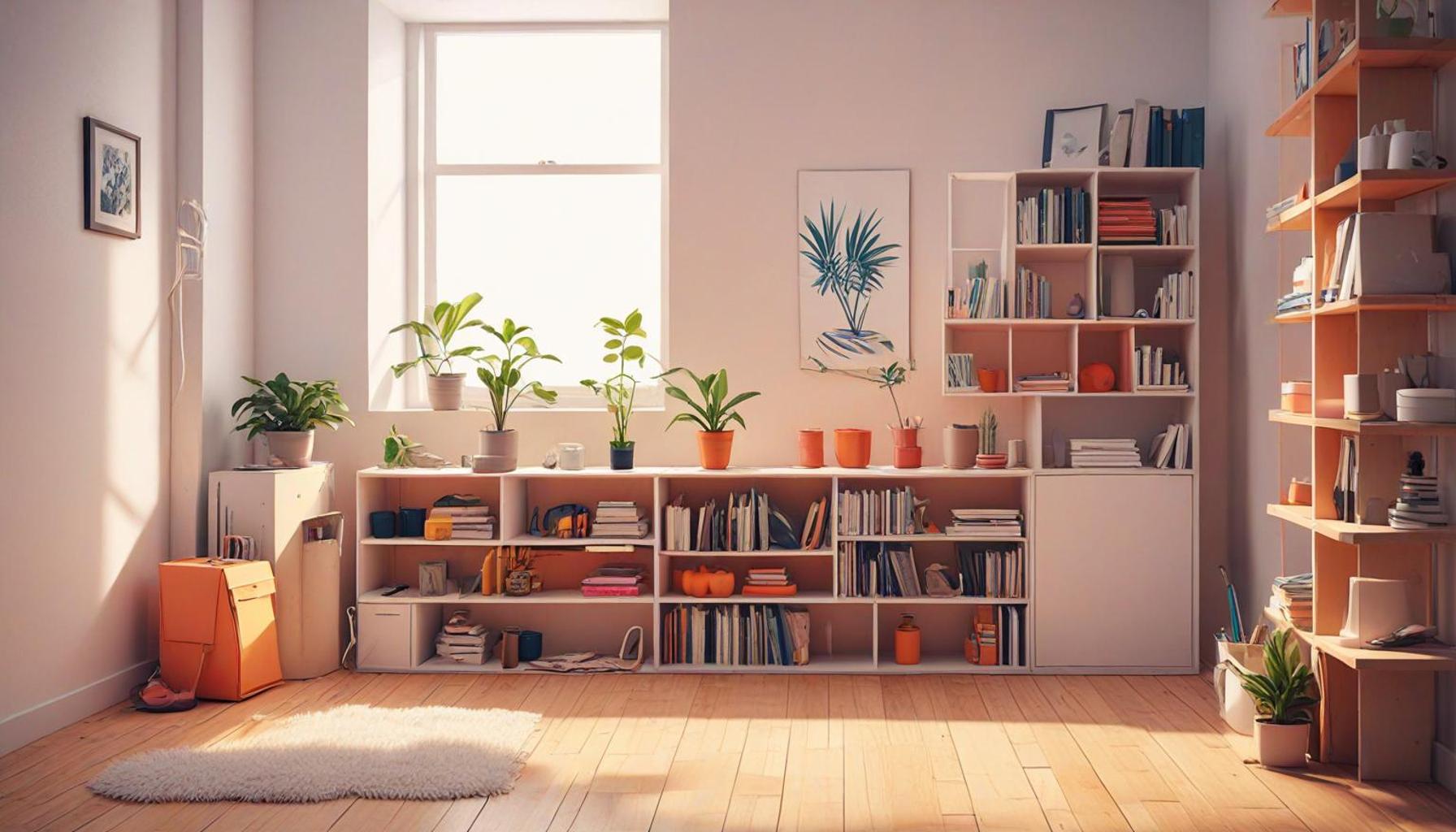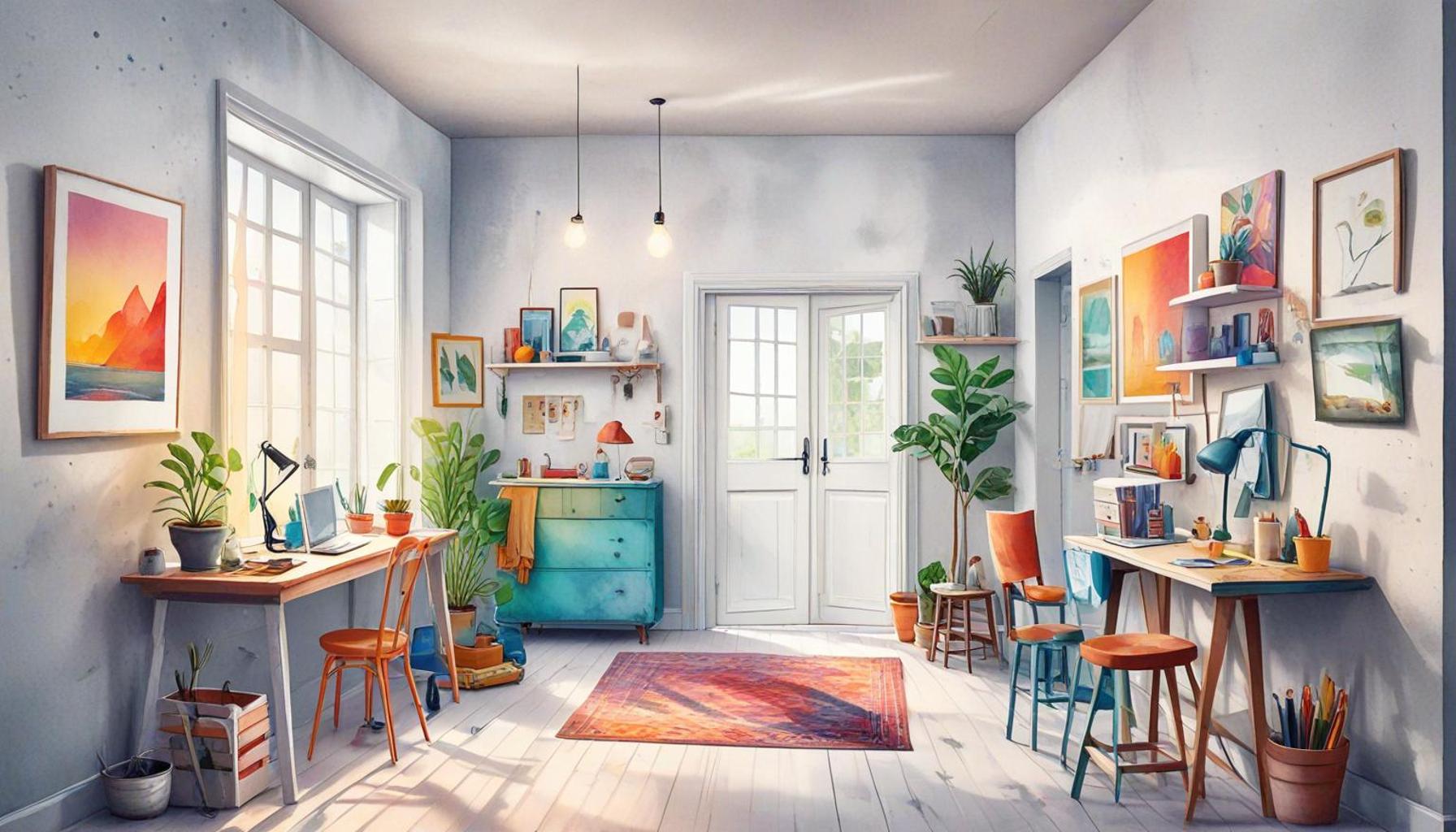Integration of Nature and Minimalism: Optimizing Spaces with Plants and Natural Elements

Embracing Nature Within Your Home
In an age where urban living often means limited space, the integration of nature and minimalism offers a breath of fresh air. Creating a harmonious environment using plants and natural elements can significantly enhance your living experience. The simple act of incorporating green life into your surroundings can transform your space, breathing vitality into your everyday routine. Urban dwellers, especially in cities like New York or San Francisco where space is at a premium, can benefit immensely from these practices.
Why Consider This Integration?
- Improved Air Quality: Studies have shown that indoor plants can filter toxins and purify the air. For example, the NASA Clean Air Study highlighted several species, such as the spider plant and peace lily, that effectively reduce pollutants. This purification promotes healthier living conditions, particularly important in urban areas where air quality can be compromised.
- Enhanced Aesthetics: Incorporating natural elements into your décor provides visual comfort and charm. Plants can complement any style, from mid-century modern to bohemian, and create visually pleasing environments that promote tranquility. Adding contrasting textures like terracotta pots or woven baskets can further enhance the aesthetic appeal of your space.
- Reduced Stress: Numerous studies link exposure to nature with lower stress levels and increased mental well-being. A simple view of greenery can produce calming effects, making a strong case for integrating plants into home offices or bedrooms, spaces where stress can accumulate.
Today’s minimalistic design principles emphasize functionality and simplicity, allowing for natural elements without overwhelming a space. By thoughtfully placing plants throughout your home, you can cultivate a serene atmosphere that embodies both style and comfort. For instance, think of using:
- Succulents on a coffee table to add a touch of greenery without the need for extensive care.
- Wall-mounted planters in the kitchen, where they can thrive in humidity and provide fresh herbs at your fingertips.
- Large leafy plants like Fiddle Leaf Fig in corners, which not only serve as eye-catching focal points but also add height and depth to your interior.
Such thoughtful placements not only optimize your space but also invite a sense of peace and connection to the outdoors. Furthermore, the incorporation of natural materials, such as wooden shelves or stone accents, can deepen this relationship, enhancing the overall aesthetic while promoting sustainability. As more individuals seek sustainable living solutions, the marriage of minimalism and nature emerges as a compelling path forward. Embracing this trend is not merely about decoration; it signifies a deeper commitment to health, well-being, and a more balanced lifestyle.
DIG DEEPER: Click here to transform your workspace
Enhancing Your Living Environment
The integration of nature and minimalism into home design serves not just aesthetic purposes but also promotes emotional and psychological benefits. Many individuals find that embracing these principles leads to a more peaceful and mindful existence. This approach combines the beauty of the natural world with the simplicity of minimalistic design, creating a space that both nourishes and rejuvenates. By making intentional choices about which plants and materials to include, homeowners can curate an environment that resonates with their personal style while maintaining a connection to nature.

Key Principles of Nature-Driven Minimalism
To effectively integrate nature into a minimalistic lifestyle, a few guiding principles can be invaluable:
- Prioritize Low-Maintenance Plants: For those in bustling urban settings, busy lifestyles often leave little time for complex plant care. Opting for options like snake plants, pothos, or succulents ensures that greenery can thrive with minimal attention, making it feasible for even the most time-strapped individuals.
- Maximize Natural Light: Enhancing natural lighting not only makes spaces feel larger but also supports plant growth. Strategically positioning mirrors to reflect light or utilizing sheer curtains can brighten up your living spaces and create an inviting ambiance.
- Incorporate Organic Textures: The use of natural materials—like wood, stone, and cotton—can enhance the earthy vibe of a room. An aged wooden shelf or a soft, linen throw brings warmth while ensuring a streamlined aesthetic. These textures can soften the harshness of linear minimalism, resulting in a cozy yet chic environment.
- Create a Central Focal Point: Consider dedicating a specific area of your home to showcase a statement plant or an arrangement of smaller plants. A tall monstera or a cascading pothos can draw the eye and serve as an artistic centerpiece, encouraging a more mindful interaction with your surroundings.
Research emphasizes that having vibrant greenery around can ease mental fatigue and enhance overall mood. One study published in the journal Environmental Science & Technology confirmed that exposure to plants indoors may reduce feelings of stress and anxiety. This revelation underscores the importance of ensuring that homes serve as sanctuaries, allowing inhabitants to recharge in a nurturing environment. Breathe Life Into Your Rooms by introducing natural elements, such as wood accents or stone features, alongside your plants. This combination not only aligns with the principles of minimalism but also echoes the thematic essence of the natural world, promoting a holistic living experience.
Ultimately, it’s about striking a balance between maintaining a cohesive, uncluttered space and inviting the harmonizing essence of nature into your life. As more people embrace the dual principles of minimalism and nature, their homes become extensions of their values, emphasizing sustainability and tranquility.
| Advantages | Key Features |
|---|---|
| Enhanced Air Quality | Plants naturally improve indoor air quality by filtering toxins. |
| Natural Aesthetics | Integrating greenery creates a serene and visually appealing environment. |
| Stress Reduction | Exposure to nature has been shown to lower stress levels significantly. |
| Productivity Boost | Natural elements in workspaces can enhance focus and productivity. |
| Space Optimization | Minimalist designs combined with plants maximize space efficiency effectively. |
Integrating nature into minimalist designs not only enhances aesthetics but also brings an array of hidden benefits. An essential advantage is the enhanced air quality that comes from plants; they act as natural air filters, absorbing pollutants and releasing oxygen, which is crucial for a healthy environment. Additionally, the presence of greenery fosters a calming atmosphere. This leads to stress reduction as various studies highlight that people show lower cortisol levels when surrounded by nature. Moreover, incorporating plants in workspaces can act as a significant productivity boost, effectively increasing focus and creativity. Not to be overlooked, the way minimalism calls for a decluttered approach resonates with efficient space optimization, where each plant not only beautifies but also serves a purpose. The trend of optimizing spaces with plants and natural elements is more than mere decoration; it’s a lifestyle choice that transcends an aesthetic shift, encouraging a healthier, more balanced way of living. Each detail contributes to a comprehensive approach to better indoor environments that echo the serenity of the natural world.
DISCOVER MORE: Click here to learn how an organized space can enhance your well
Creating a Sanctuary with Nature
Incorporating plants and natural elements into minimalist spaces is not just about aesthetics; it is about creating a sanctuary that resonates with our innate connection to the natural world. This connection has profound implications for our mental well-being, productivity, and overall happiness. Indeed, the phenomenon known as “biophilia”—the inherent human inclination to connect with nature—underscores the importance of integrating these elements into our living and working environments. A recent report from the American Society of Landscape Architects indicates that 90% of respondents believe incorporating nature into urban environments enhances quality of life.
Designing with Nature’s Palette
The color scheme you choose can significantly impact the ambiance of a space while reinforcing the theme of naturalism. Utilizing a neutral color palette with earthy tones—grays, whites, beiges, and greens—creates a serene backdrop for the greenery without overwhelming the senses. For instance, pairing plants like ferns or rubber trees with off-white walls and wooden accents establishes a harmonious flow, making it feel as though the indoor space extends into the surrounding environment. Additionally, consider painting ceilings in soft, nature-inspired hues to enhance the illusion of height while offering a calming effect.
Functional Furniture and Green Accents
To marry function and nature, opt for multifunctional furniture pieces that offer both utility and elegance. A stylish bench adorned with potted succulents or an open bookshelf crafted from reclaimed wood offers more than just decorative appeal; it also fosters mindfulness by encouraging interaction with the plant life. Such designs not only conserve space but also embody the principles of sustainability, which are central to minimalism. Furniture that folds or serves multiple purposes allows for flexibility within your space, enabling you to adapt your environment to your changing needs while integrating greenery seamlessly.
Seasonal Dynamics with Indoor Gardening
Another aspect of optimizing spaces with plants is embracing seasonal changes. Designing a dynamic indoor garden that evolves through various times of the year can offer a refreshing liveliness. During the fall, consider introducing pumpkins or ornamental corn as decorative elements alongside existing houseplants. In the winter, evergreens such as Christmas cacti or holly can brighten the space, adding warmth during colder months. The cyclical nature of planting can also serve as a reminder to pause, reflect, and engage more closely with your home environment.
Urban Garden Escapes
For those living in urban areas with limited outdoor space, balcony gardens and indoor vertical gardens present innovative solutions for integrating nature. Hanging planters or wall-mounted garden systems utilize vertical space smartly, making it possible to cultivate a diverse array of plants without sacrificing room. Engaging in activities such as planting herbs or flowering vines allows for a tactile connection to nature, while also creating a comfortable area for relaxation and contemplation amid the hustle and bustle of city life. A study conducted by Harvard University found that indoor plants can enhance creative thinking by up to 45%, emphasizing the need for personal green spaces.
As individuals increasingly recognize the importance of merging their home environment with natural elements, their spaces evolve into personal sanctuaries that reflect both aesthetic desires and deeper values. By thoughtfully considering the role of plants and organic materials, we can transform our living areas into meaningful retreats that promote well-being and serenity.
DISCOVER MORE: Click here to learn about the emotional impact of decluttering
Conclusion: Embracing Nature in Our Living Spaces
The integration of nature and minimalism presents an exciting opportunity to enhance our living and working environments. As we prioritize simplicity and functionality, the addition of plants and natural elements creates spaces that promote tranquility and mindfulness. Scattered throughout our homes or strategically placed within urban settings, greenery acts as a powerful antidote to today’s fast-paced lifestyle, acting not just as a visual enhancement but as a vital component of our mental well-being.
By utilizing a neutral color palette and multifunctional furnishings, we can support a seamless transition between the indoors and the natural world, fostering a sense of belonging. Seasonal indoor gardening adds a refreshing dynamism that encourages engagement with our surroundings and offers an ongoing connection to the cycles of nature.
Furthermore, as the urban population continues to rise, the quest for innovative solutions to incorporate green spaces becomes ever more critical. Vertical gardens and balcony escapes showcase how small adjustments can provide significant benefits, supporting both creativity and calmness. The Harvard University study highlights this, reminding us that even a few indoor plants can boost our creativity and productivity substantially.
Ultimately, by embracing the principles of minimalism alongside the soothing presence of nature, we can craft personal sanctuaries that enhance our quality of life. As we move forward, let us seek out those green touches that not only beautify our spaces but nourish our spirits, inspiring a more harmonious way of living that reflects our intrinsic connection with the earth.



